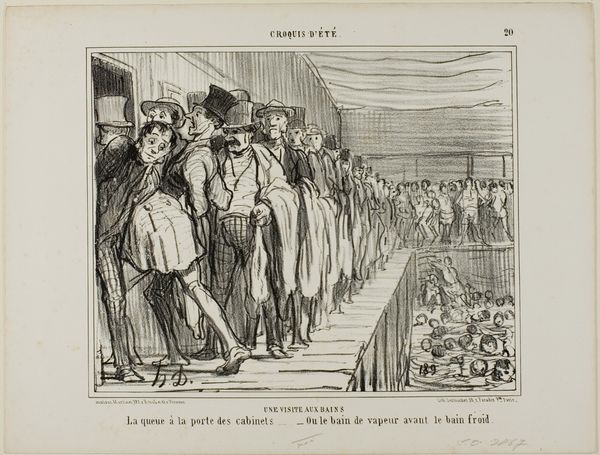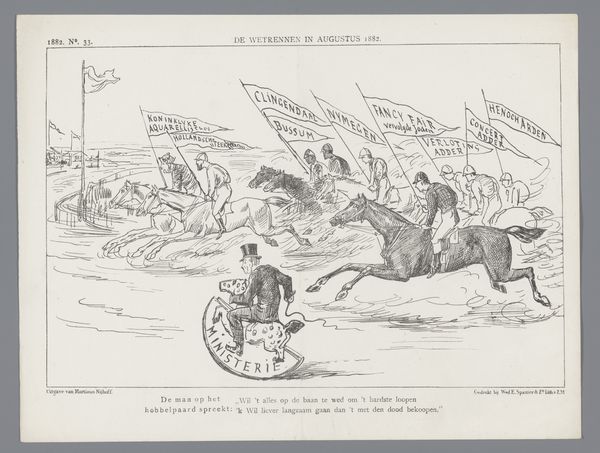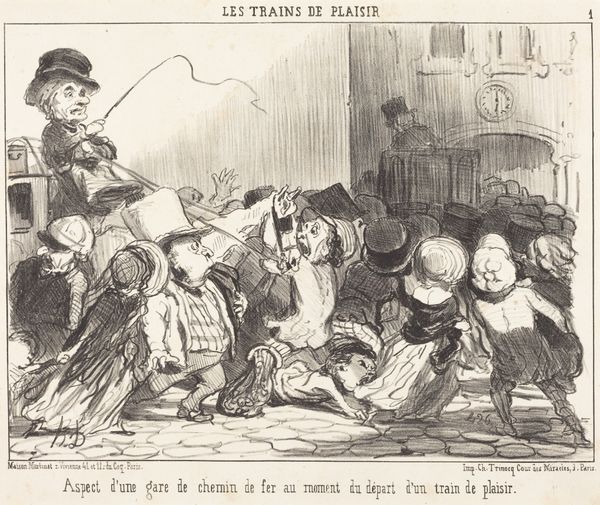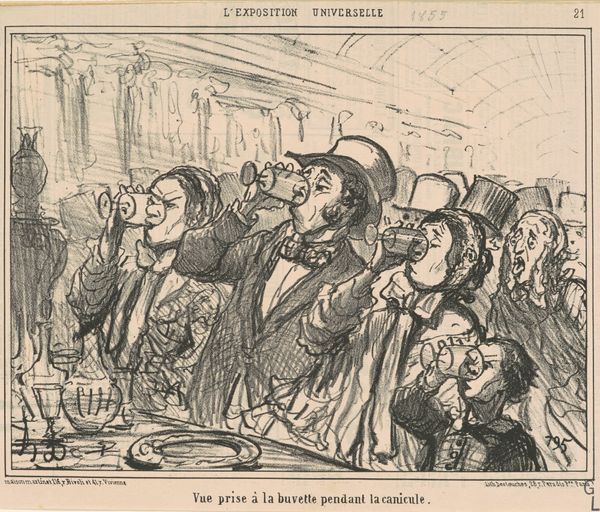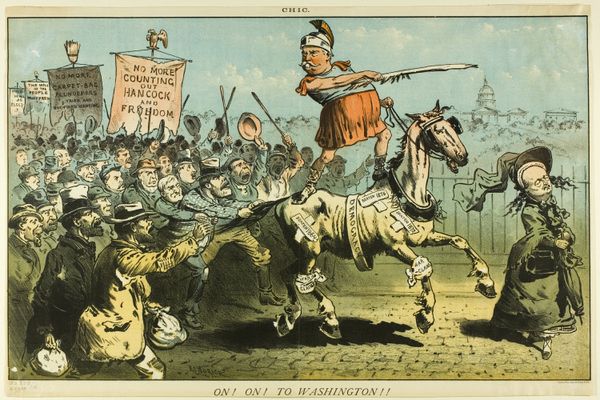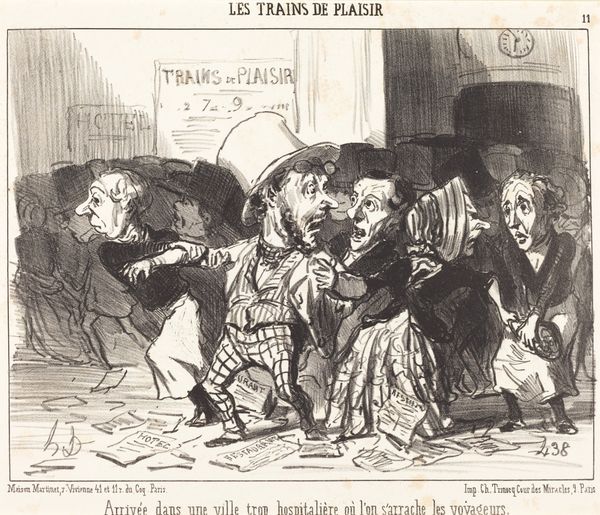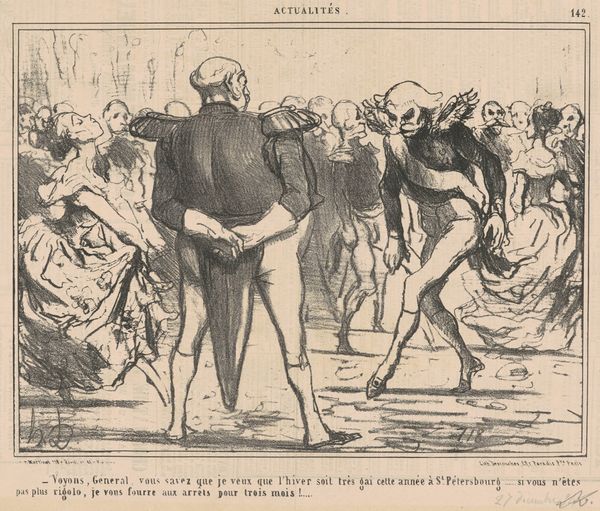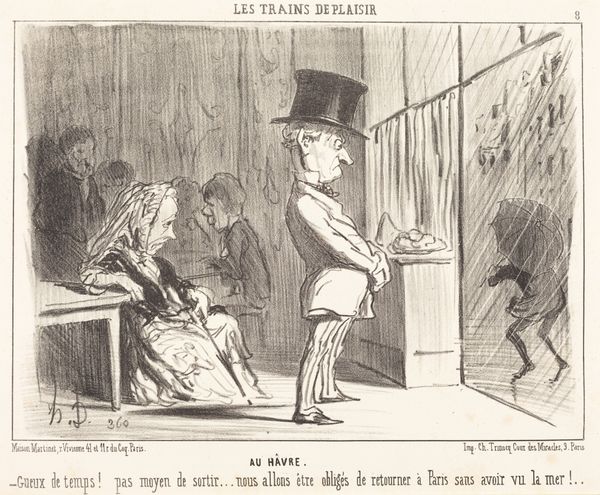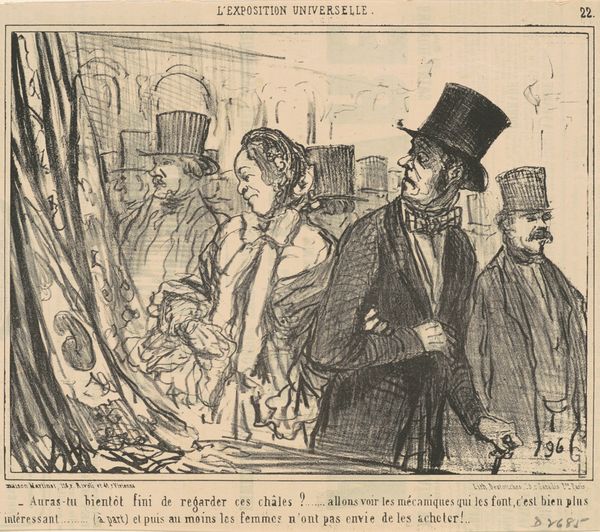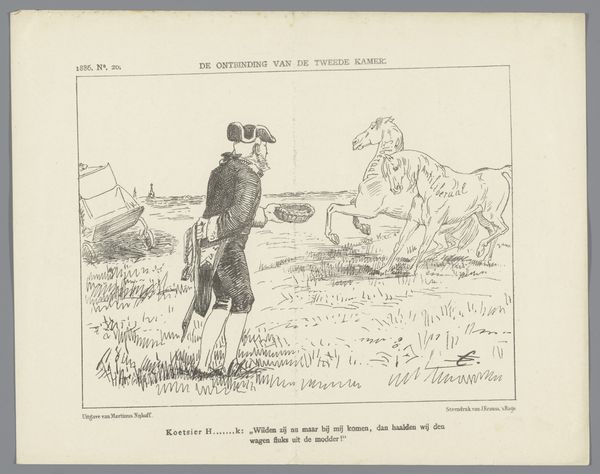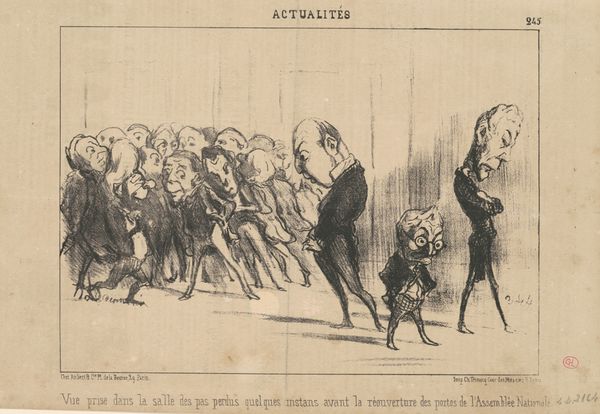
Copyright: National Gallery of Art: CC0 1.0
Editor: So, this lithograph, “Satanées salades …” by Honoré Daumier, is from the 19th century. The chaotic line work makes me think of the turmoil of modern life. It feels more like a social commentary than a relaxing landscape. How do you interpret this work? Curator: The title itself gives us a clue. Daumier was a master of social critique, using satire to expose the absurdities of bourgeois life. He placed this 'country pleasure' – tending a garden – in stark contrast with the actual back-breaking labor it involves. The “damned salads” being always thirsty reflects not just the plant's needs but also the insatiable desires of the social class he's mocking. How do you think this caricature speaks to issues of class and labor? Editor: That’s a great point! The exaggerated features definitely seem to lampoon the figure's perceived status. Is he criticizing the exploitation inherent in agricultural labor? Curator: Absolutely. And it's worth considering that Daumier created these works for mass consumption in newspapers. His art reached a broad audience, allowing him to shape public opinion and challenge dominant narratives. This aligns with broader historical movements of challenging oppressive labour structures, wouldn't you say? Editor: That makes perfect sense. I didn't initially think about it in terms of labor movements. I appreciate learning the deeper social and historical layers that are embedded in what I first took to be just a comic sketch. Curator: Precisely. By viewing Daumier's satire through the lens of social justice, we gain a deeper understanding of the inequalities prevalent in 19th-century French society, and, by extension, understand present dynamics through past representations.
Comments
No comments
Be the first to comment and join the conversation on the ultimate creative platform.
